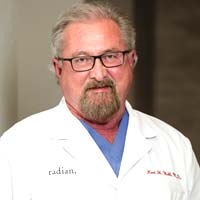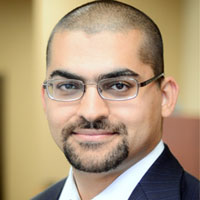Best Hair Transplant Clinics in Georgia
A populous state in the south eastern part of the United States, Georgia is also called the Peach state. Hair transplant clinics are a part of the scenery in the capital city Atlanta and other places around the state.
Preventing hair loss and restoration of hair by surgical methods is not a tough job nowadays with new advents in technology and medicine. John Peter Cole head of the Cole Hair Transplant Group specializes in Follicular Unit Extraction (FUE) and Follicular Unit Transplant (FUT). He promotes an alternate method of hair transplant called CIT - Cole Isolation Transplant a non-strip method of hair transplant.
CIT is steps ahead of the FUE procedure and is also called FIT for Follicular Isolation Technique. The patient can have a short hair style, or even shave his head as there is no scar. Here the donor area is thinned out methodically and groups of hair are extracted and transplanted on bald scalp areas leaving no scar.
The Hair Restoration Center of Savannah headed by plastic surgeon Dr. Ron Finger serves the needs of patients afflicted with hair loss problems.
NeoGraft used here is a new surgical patented technology which is refined, minimally invasive and affordable which leaves minimal scars. NeoGraft is an automated procedure where the equipment takes micro-grafts or follicular unit extractions from the back of the head which is then transplanted into the recipient’s scalp. Each graft has 1 to 4 hair follicles.
The removed micrografts leave a hole which closes in a day or two without any sutures or staples. About 2,500 grafts can be transplanted in one sitting.
New Youth Medical Spa in Savannah, Georgia also uses the NeoGraft Hair Transplant System. NeoGraft solution does not require excision of hair containing scalp. NeoGraft technique does not leave a horizontal scar and does not need staples or sutures.
As the survival rate of the hair follicles is high, hair growth is thicker. The time taken to perform the procedure is also less compared to manual FUE procedures. The hair in the grafts are visible for 2 to 3 weeks after the procedure then they drop out leaving the dormant bulb under the skin from which a new hair will grow. Full hair growth can be expected in 12-18 months. Patients are allowed to shampoo their hair the next day and resume normal activity in 3 to 5 days.
Jonathan Ballon, Hair Transplant Doctor helps hair loss patients in Atlanta at the Hair Club, Georgia. Dr. Ballon a neurosurgeon and a hair loss patient himself, took up the hair transplantation profession to give relief to men.
According to Hair Club, hair transplant is the best solution to get a full crop of hair as it is an all-natural solution which lasts for the rest of the patient’s life. It suits people who suffer from
moderate hair loss, but still have enough hair on the back or sides of the head and who prefer own natural hair.
Hairfear
Frequently asked questions about hair transplant procedures
How much does a hair transplant cost?
Hair transplants can vary in price based off of the area in the world that you are interested in getting a hair transplant as well as the size of the area where you may need a hair transplant. Experienced doctors in the United States will often charge some of the highest prices for a hair transplant worldwide and this is why so many travelers make the move to other parts the world like Turkey, India, Thailand, Mexico...etc for their hair transplants.
Will a hair transplant hurt?
Although hair transplants may look like a particularly
unpleasant or painful experience is actually very little discomfort involved
with the surgery itself. Hair transplants are always done under an anesthetic so there's absolutely zero pain during the treatment itself. Many people actually relate the process as being very similar to going to the dentist for filling or root canal. Mild pain can persist over the course of postop treatment but he generally just resumes for a few days.
Who can deliver the best surgery?
It's usually best to consider working with surgeons who have and IAHRS certification or international alliance of hair restoration surgeons recognition. IAHRS can often deliver recommendations for the best surgeons in each particular area.
Is this scarring noticeable?
Any type of hair transplant will require the use of incisions throughout the scalp. There can also sometimes be a small scar from the donor area towards the back of the scalp. Asking to look at photos of the surgeon's previous work will help you to see roughly how bad the scarring could be. In most cases an experienced professional can limit the look of scarring and noticeable marks from the surgery.
How long does it take for the hair to grow?
In most cases hair growth will start within eight months and you can start to see a full effect from the hair transplant after a full year. The initial signs of growth can usually start between 3 to 4 months after the surgery.
Are the results permanent?
The hair follicles that are transplanted are generally the ones which are genetically resistant against the symptoms of baldness. As long as you receive hair loss treatment later in your life after the symptoms of balding have started to subside, you can have a better chance at permanent results.
While everyone know you've had surgery?
If you want to limit the chance that people may find out about your surgery it's important to give at least three weeks of healing as the surgical area will be affected and red just after surgery. After around a month of healing it can look far less noticeable. You could consider wearing a hat while time passes or opting for some extra time off if possible.
How long should I rest after surgery?
It's recommended to rest for at least a few days after surgery so that your body can recover. Trenton to over exert yourself and limit sexual activity, running in the gym for around 10 days after surgery.
Is it possible to lose more hair as a result of surgery?
There is always a chance of shock loss which happens when the hair is weak and miniaturizing after the surgery. As long as the surgeon is choosing the correct hair follicles and performing the surgery well it's possible to minimize the chance of this happening however.
Will I need another hair transplant?
The need for another transplant really depends on the individual. With a solid foundation surgery and working to potentially bolster results with drug therapy, you can improve the stability of the hair that was transplanted as well as prevent further loss. Getting a hair transplant early
on in your 20s or early on in life could lead to needing long-term transplants as hair loss can be progressive.







